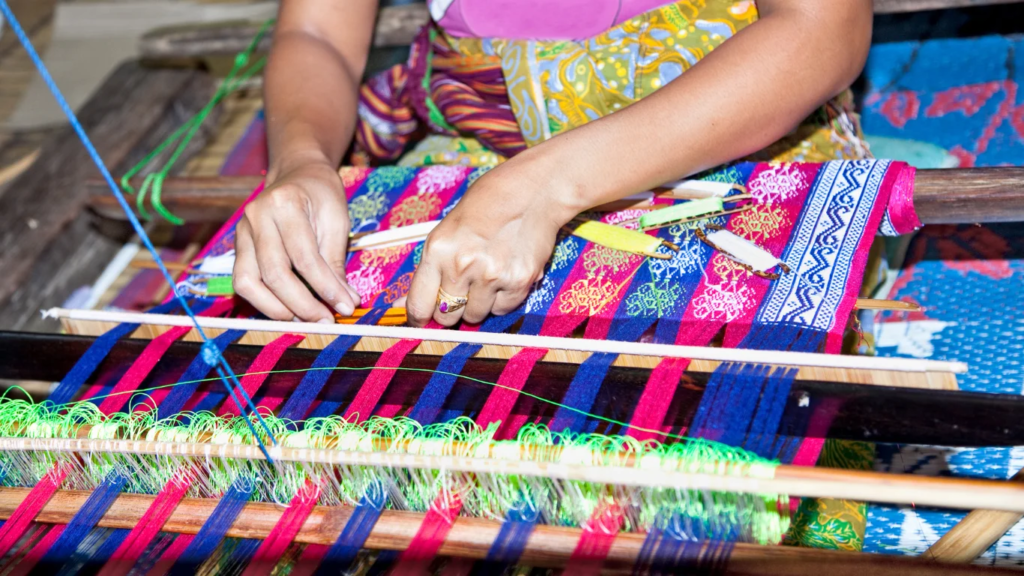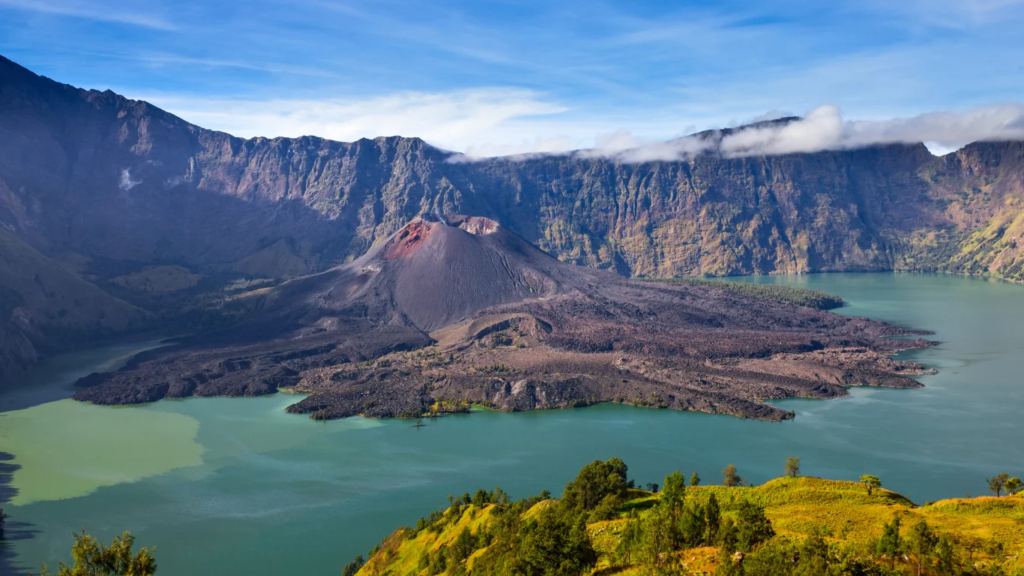Table of Contents
Lombok, often overshadowed by its more famous sibling Bali, is an island full of surprises, rich culture, breathtaking natural beauty, and unique traditions. Here are five interesting facts about Lombok Island that might inspire you to add this stunning island to your travel bucket list.
1. The Mystery Behind Lombok Island’s Name
The origin of the name “Lombok” is a topic of much debate. Derived from the local Sasak language, it translates to “straight” in Indonesian, hinting at a possible geographical significance.
Interestingly, “Lombok” also means chili in Bahasa Indonesia. This connection has led to a popular theory that the island is named after its fiery and spicy cuisine, renowned for tantalizing the taste buds of locals and visitors alike. The dual meanings of Lombok Island’s name reflect the island’s multifaceted character, blending natural beauty with a rich culinary tradition.

2. The Rich Culture of the Sasak People
At the heart of Lombok Island’s cultural identity are the Sasak people, who bring the island’s traditions and heritage to life. The Sasak community is predominantly Muslim, with the majority adhering to the Wektu Lima sect, which follows Islamic practices closely.
However, the island’s cultural diversity is further enriched by the Wektu Telu group, predominantly found in North Lombok. This group uniquely integrates Muslim beliefs with elements of Buddhist, Hindu, and animistic traditions, creating a syncretic blend of religious practices that reflect the island’s historical and cultural intersections.
The Sasak people’s way of life, from their intricate weaving to their ceremonial rites, offers a glimpse into the soul of Lombok Island, making it a living museum of culture and tradition.

3. Lombok and Bali: Divided by Nature’s Boundary
Separating Lombok from Bali, the Lombok Strait is more than just a geographical boundary. It’s a gateway to a world of biodiversity. This strait serves as the demarcation line known as the Wallace Line, named after the British naturalist Alfred Russell Wallace. Wallace’s observations in the 19th century led to the delineation of this line, which marks the biological divide between the fauna of Indo-Malaysia and the distinctly different fauna of Australasia.
The existence of the Wallace Line emphasizes Lombok Island’s unique position at the crossroads of two major ecological zones, offering a habitat to a diverse range of species that cannot be found together anywhere else in the world. This natural phenomenon underlines the island’s importance as a site of rich biodiversity and evolutionary study.

4. The Allure of Pink Sand Beaches
Lombok’s beaches are famed for their pristine beauty, but none are quite as unique as its pink sand beaches, a rare phenomenon that adds a touch of magic to the island’s coastline. The most famous among them, Tangsi Beach, located on the southeast coast, is a marvel of nature. The pink hue of the sand comes from microscopic red organisms that live on the coral reefs. When mixed with the white sand, these organisms give the beach its distinctive rosy color, which is especially vibrant under the sunlight and at sunset.
This natural spectacle creates a stunning contrast with the turquoise blue waters, offering one of the most picturesque scenes in Indonesia. The existence of three such beaches on Lombok Island not only showcases the island’s geological diversity but also makes it a special destination for beach lovers seeking out the extraordinary.
Beyond their beauty, these pink sand beaches symbolize Lombok Island’s unique charm, blending the island’s natural wonders with a sense of discovery and enchantment.

5. The Majestic Mount Rinjani
Mount Rinjani, standing as Indonesia’s second tallest volcano, presents one of the most challenging and rewarding trekking experiences in Southeast Asia. Towering at a majestic height of 3,726 meters, it surpasses Bali’s Mount Agung by nearly 700 meters, offering not just a trek but a journey through diverse ecosystems and breathtaking landscapes.
The ascent to Rinjani’s summit is a physical endeavor and a spiritual journey revered by locals and adventurers alike. The trek typically spans three days, requiring campouts on its vast slopes under the stars. The path leads trekkers through thick forests, past steaming vents, and over a lunar-like landscape, culminating at the crater rim. From there, the view of the crater lake, Segara Anak, is a sight to behold, making all the effort worthwhile.
Rinjani’s status as the runner-up for the tallest volcano in Indonesia does little to diminish its allure, instead highlighting the island’s dramatic natural beauty and the adventurous spirit it evokes in those who scale its heights.

Conclusion
Lombok Island’s intriguing name origin, natural wonders, and rich cultural heritage make it a fascinating destination for travelers seeking experiences beyond the well-trodden paths of Bali. From its geological significance marked by the Wallace Line to the enchanting pink sand beaches, Lombok invites adventurers, culture enthusiasts, and nature lovers to explore its many treasures.
Whether you’re drawn to the challenge of hiking Rinjani or the serene beauty of its unique beaches, Lombok Island promises unforgettable experiences and discoveries. Need more information about what to do in Lombok? Check out our blog on the 10 best things to do in Lombok!




